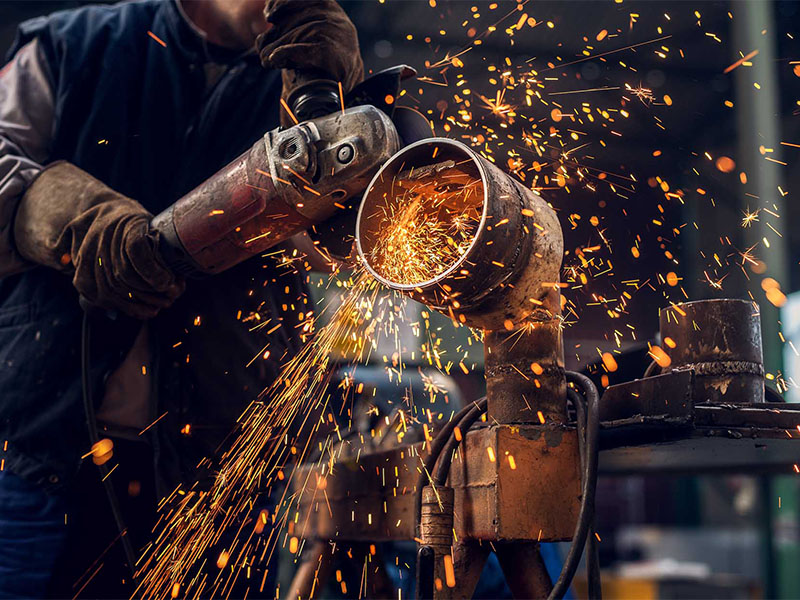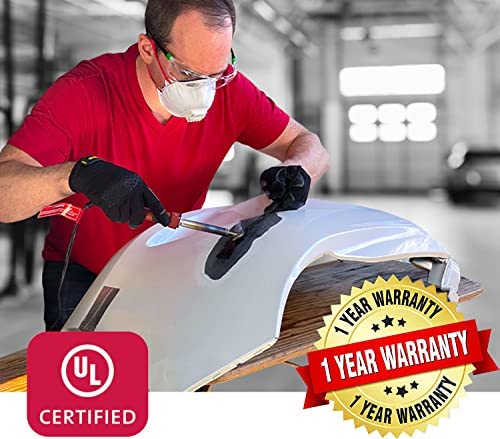All Concerning Welding: Key Insights Into Techniques and Finest Practices for Success
Welding incorporates a selection of methods, each fit for specific products and applications. Recognizing these approaches, such as GMAW, SMAW, and TIG, is crucial for attaining excellent results. The ideal devices and safety and security methods can not be neglected. As preparation and fixing play vital duties in the welding process, mastering these components can significantly boost the high quality of the end product. What are the essential factors that assure a successful weld?
Recognizing Various Welding Techniques
Welding strategies encompass a range of techniques, each fit to certain applications and materials. Amongst one of the most typical strategies are Gas Steel Arc Welding (GMAW), Shielded Steel Arc Welding (SMAW), and Tungsten Inert Gas Welding (TIG) GMAW, additionally called MIG welding, is popular for its rate and versatility, making it suitable for slim products. SMAW, or stick welding, is preferred for its simpleness and efficiency in outside environments, especially with thicker steels. TIG welding uses precision and control, making it suitable for intricate job and non-ferrous metals (Fabrication). Each strategy has its unique advantages and factors to consider, enabling welders to select the most effective approach based upon the project's requirements, product kind, and wanted results. Understanding these methods is necessary for effective welding
Vital Welding Tools and Devices
While numerous welding techniques require certain skills, the ideal tools and tools are equally crucial for achieving high quality results. Crucial welding tools includes welding machines, which vary depending upon the method-- such as MIG, TIG, or stick welding. Safety equipment, consisting of gloves, aprons, and safety helmets, guarantees safety and comfort during the process. Additionally, fixtures and clamps help safeguard materials in location, making sure precision in welds. Consumables like welding rods, cable, and shielding gas are also crucial components that affect the high quality of the weld. Additionally, tools such as grinders and cutters promote surface area preparation and post-weld completing, adding to an expert result. Purchasing top quality equipment eventually improves the effectiveness and efficiency of welding jobs.
Safety Practices in Welding
Correct safety methods are important in the welding sector to safeguard workers from potential hazards. Welders should use suitable individual protective equipment (PPE), including safety helmets with proper shading, handwear covers, and flame-resistant clothing. Appropriate air flow is important to lower exposure to damaging fumes and gases generated during the welding process. Furthermore, employees should be trained in the correct handling of welding devices to avoid accidents. Fire precaution, such as keeping flammable materials away from the welding location and having fire extinguishers readily available, are essential. Regular inspections of devices and offices can assist identify potential risks prior to they bring about mishaps. By sticking to these safety methods, welders can produce a much safer working setting and lessen risks related to their trade.
Preparing Products for Welding
Preparing materials for welding is a vital step that greatly influences the high quality and honesty of the final item (Belgrade). Proper preparation includes cleansing the surface areas to eliminate pollutants such as oil, corrosion, and dirt, which can compromise the weld. Techniques such as grinding, fining sand, or utilizing solvents are frequently used to achieve a clean surface. Additionally, ensuring that the products mesh snugly is vital; gaps can bring about weak welds. It's additionally essential to consider the alignment and positioning of the components, as this will influence the ease of welding and the last result. Choosing the appropriate filler product and making sure compatibility with the base metals is necessary for attaining strong, durable welds.
Tips for Achieving High-Quality Welds
Achieving premium welds calls for interest to detail and adherence to best techniques throughout the welding procedure. Appropriate joint prep work is necessary, making sure surfaces are tidy and free from pollutants. Picking the suitable filler material and welding strategy based on the base metals is important for ideal bonding. Maintaining constant traveling speed and angle while welding can stop defects and advertise harmony. Additionally, managing warmth input is vital; excessive heat can result in warping and weakened joints. Frequently evaluating the welds during the process permits instant modifications if required. Utilizing ideal post-weld therapies, such as cleansing and anxiety relief, can enhance the toughness and stability of the weld, ultimately making sure an effective result.
Fixing Usual Welding Issues
Welding usually presents difficulties that can influence the high quality and stability of the end product. Usual problems such as porosity, inconsistent weld beads, and getting too hot can develop, each calling for specific repairing techniques. Comprehending these troubles is important for welders to read this boost their abilities and accomplish perfect outcomes.
Porosity Troubles Clarified
Porosity can often be neglected, it continues to be a crucial problem in welding that can endanger the honesty of a completed product. Porosity refers to the existence of tiny gas pockets within the weld bead, which can damage the joint and lead to early failing. This issue typically develops from impurities, moisture, or incorrect protecting gas protection throughout the welding procedure. To reduce porosity, welders should validate that the base materials are completely dry and clean, use ideal shielding gases, and maintain constant welding criteria. On a regular basis checking the equipment and setting can additionally aid identify potential issues before they manifest in the weld. Addressing porosity efficiently is crucial for achieving strong, sturdy welds that fulfill quality standards.

Irregular Weld Beans
Irregular weld grains can significantly affect the quality and toughness of a finished product. Different elements add to this concern, including improper traveling check that speed, inaccurate amperage setups, and irregular electrode angles. When the welder moves too swiftly, a bead may show up slim and do not have infiltration, while moving as well gradually can create too much buildup. In addition, using the wrong amperage can cause either undercutting or excessive spatter, both of which compromise weld stability. The welder's strategy, such as irregular torch activity, can additionally result in irregular bead appearance. To mitigate these issues, welders must concentrate on keeping steady, controlled movements and making sure proper equipment settings to accomplish uniformity in their welds. Uniformity is crucial to accomplishing solid and reputable welds.
Getting Too Hot and Warping Issues
Extreme heat throughout the welding procedure can result in considerable getting too hot and contorting problems, affecting the architectural honesty of the workpiece. These problems typically show up as distortion, which can jeopardize positioning and fit-up, making additional assembly testing. Variables adding to overheating consist of the option of welding parameters, such as voltage and travel rate, in addition to the sort of material being welded. To alleviate these concerns, welders must keep regular travel rate and ideal warmth input while keeping track of the workpiece temperature. Additionally, pre-heating or post-weld heat treatment can assist reduce anxieties triggered by rapid air conditioning - Montana Mobile Welding and Repair Belgrade Welding. Routine evaluation and adherence to ideal practices are necessary in stopping getting too hot and making certain the longevity and dependability of bonded structures
Frequently Asked Inquiries
What Are the Career Opportunities in the Welding Industry?
The welding sector supplies varied career opportunities, including settings as welders, instructors, examiners, and designers. Professionals can work in manufacturing, building and construction, aerospace, and automotive industries, gaining from solid demand and competitive incomes in numerous functions.
Just How Can I Enhance My Welding Rate Without Compromising Quality?
To boost welding rate without giving up Source high quality, one ought to practice reliable methods, preserve equipment, optimize setups, and boost hand-eye coordination. Regular training and seeking feedback can also considerably contribute to accomplishing much faster, premium welds.
What Qualifications Are Offered for Welders?
Many qualifications exist for welders, consisting of those from the American Welding Society (AWS), the National Center for Building Education And Learning and Research Study (NCCER), and various industry-specific companies. These qualifications boost employability and demonstrate ability proficiency.
How Does Welding Impact the Characteristics of Metals?
Welding affects the homes of metals by changing their microstructure, which can bring about modifications in ductility, strength, and hardness. Warm input and air conditioning prices during the procedure significantly influence these material characteristics.
Can I Weld Dissimilar Metals With Each Other?
